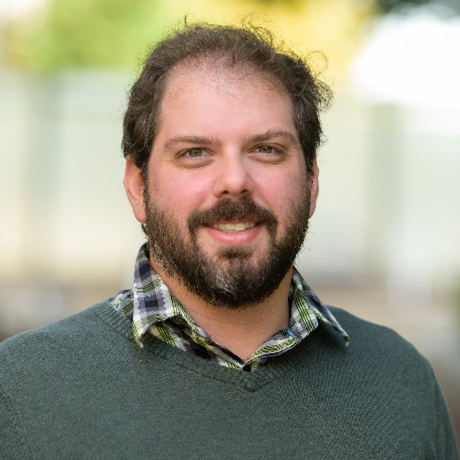Chief
Andrew Kesner, Ph.D.

5625 Fishers Lane, Rm TS-20A
Rockville, MD 20852
Focus Area
Biographical Summary
Dr. Andrew Kesner’s overarching scientific interests are in the neural mechanisms of motivated behavior and the maladaptations of these mechanisms that give rise to psychiatric disorders like depression, anxiety, and addiction. He began his research career as an undergraduate at Johns Hopkins University in the behavioral neuroendocrinology laboratory of Dr. Gregory F. Ball where he was introduced to systems neuroscience research and became fascinated by appetitive behaviors associated with courtship and mating. This experience facilitated his transition to postbaccalaureate research where he began to study brain reward circuitry and neurobiology of substance use disorders at the National Institute on Drug Abuse (NIDA) in the laboratory of Dr. Satoshi Ikemoto. For Dr. Kesner’s PhD thesis, under the continued mentorship of Dr. Ikemoto, he studied the supramammillary nucleus, a relatively understudied brain region in the ventro-medial posterior hypothalamus, and its role in reward and motivated behaviors through a partnership between Johns Hopkins University and NIH. During this time, he gained expertise in optogenetic, chemogenetic, and in-vivo electrophysiology during behavioral experiments. He also collaborated with other groups specializing in fMRI, small animal PET, and ex-vivo electrophysiology to elucidate that the supramammillary drives motivation for environmental interaction. In January of 2019 Andrew began postdoctoral work at NIAAA in Dr. David Lovinger’s Laboratory for Integrative Neuroscience to study how neural mechanisms mediating sleep are disrupted by chronic THC. Through this Postdoctoral work he combined expertise in behavioral neuroscience with new skills in rodent-sleep research to carve a niche for himself by studying altered sleep during drug withdrawal, and how this affects other motivated and emotional behaviors. Since 2021, Dr. Kesner has continued this research program as an Independent Research Scholar at NIAAA and Chief of the Unit on Motivation and Arousal (UMA).
When Andrew is not in the laboratory, he spends most of his time with his family (usually playing with toys, and then cleaning up said toys…), traveling, noodling around on guitar and piano, and spending time outdoors. If he wasn’t a neuroscientist, Andrew would probably be a children’s toy inventor.
Selected Publications
Articles
- A.J. Kesner, Y. Mateo, K.P. Abrahao, S. Ramos-Maciel, M.J. Pava, A.L. Gracias, R.T. Paulsen, H.B. Carlson, D.M. Lovinger. Changes in striatal dopamine release, sleep, and behavior during spontaneous Δ-9-tetrahydrocannabinol abstinence in male and female mice. Neuropsychopharmacology. 2022 Apr 27:1-3.
- C. Yang, Y. Hu, A.D. Talishinsky, C.T. Potter, C.B. Calva, L.A. Ramsey, A.J. Kesner, R.F. Don, S. Junn, A. Tan, A.F. Pierce, C. Nicolas, Y. Arima, S.C. Lee, C. Su, J. M. Coudriet, C.A. Mejia-Aponte, D.V. Wang, H. Lu, Y. Yang, S. Ikemoto. Medial prefrontal cortex and anteromedial thalamus interaction regulates goal-directed behavior and dopaminergic neuron activity. Nature Communications. 2022 Mar;13:1386.
- A.J. Kesner, R. Shin, C.B. Calva, R. F. Don, S. Junn, C.T. Potter, L.A. Ramsey, A.F. Abou-Elnaga, C. G. Cover, D.V. Wang, H. Lu, Y. yang, S. Ikemoto. Supramammillary neurons projecting to the septum regulate dopamine and motivation for environmental interaction in mice. Nature communications. 2021 May 14;12(1):1-8.
- C.G. Cover, A.J. Kesner, S. Ukani, E.A. Stein, S. Ikemoto, Y. Yang, H. Lu. Whole brain dynamics during optogenetic self-stimulation of the medial prefrontal cortex in mice. Communications biology. 2021 Jan 14;4(1):1-8.
- K. Juczewski, J.A. Koussa, A.J. Kesner, J.O. Lee, D.M. Lovinger. Stress and behavioral correlates in the head-fixed method: stress measurements, habituation dynamics, locomotion, and motor-skill learning in mice. Scientific reports. 2020 Jul 22;10(1):12245.
Reviews
- A.J. Kesner, C.B. Calva, S. Ikemoto. Seeking motivation and reward: Roles of dopamine, hippocampus, and supramammillo-septal pathway. Progress in Neurobiology. 2022 May 1;212:102252.
- A.J. Kesner, D.M. Lovinger. Cannabis use, abuse, and withdrawal: Cannabinergic mechanisms, clinical, and preclinical findings. Journal of neurochemistry. 2021 Jun;157(5):1674-96.
- A.J. Kesner, D.M. Lovinger. Cannabinoids, endocannabinoids and sleep. Frontiers in molecular neuroscience. 2020:125.
- A.J. Kesner, D.M. Lovinger. Wake up and smell the dopamine: new mechanisms mediating dopamine activity fluctuations related to sleep and psychostimulant sensitivity. Neuropsychopharmacology. 2021 Mar;46(4):683-4. Invited commentary.
Research Interest
My research focuses on the neural pathways controlling whether we approach positive stimuli (such as food when we are hungry, or a safe place to rest when we are tired) and avoid negative stimuli (like something that makes you sick, or harmful places/events). These basic behaviors are fundamental to everyday survival and living a healthy life, but when the neural mechanisms controlling them go awry, individuals can suffer from devastating illnesses such as depression, anxiety, obesity and drug addiction. The goal of my research is to understand brain systems that govern these critical behaviors and gain insight into how to treat people who suffer from maladaptations leading to mental illnesses.

